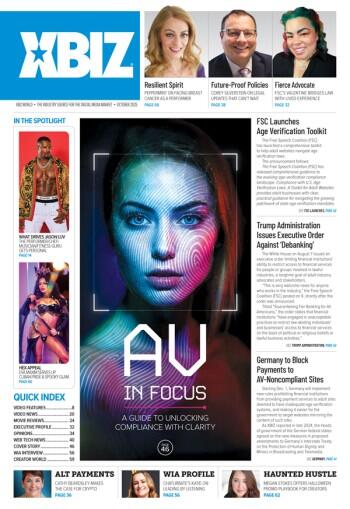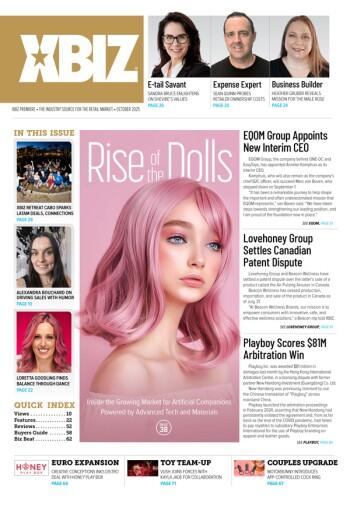When I first got into adult, before I ever started this company, having a vast marketing background I observed the marketing in this space. Now I must say I’m not a big fan of mainstream marketing, but I found the marketing in adult to be even worse. Lots of ads on boards and in trade publications that did nothing to explain why someone should join your program or do business with your company. Banners at trade shows with the company logo, a slogan and nothing else. Tens of thousands of dollars being dropped at the same shows for parties that those attending, after drinking the sponsor’s booze probably couldn’t even remember who sponsored it the next day. I could go on and on, but I think you get my point. Plenty of money is being spent, but there aren’t a lot of results to show for it.
Things have changed a little bit, but not a lot in the seven-plus years I’ve been in adult. The economy and the other challenges this industry is facing have caused there to be less money spent. But it isn’t being spent any better.
There is a better way. Those of you who have read my newsletters and seen my posts on different industry boards or met me at a trade show have heard my philosophy on marketing. For the rest of you here it is. Marketing should build a case for your business like an attorney builds a case for his or her client in court. If you do your marketing the right way this will be the result. Your marketing jury (your prospects and customers) will come to the conclusion that they’d have to be an absolute fool to do business with anyone else but you, regardless of price. If your marketing doesn’t do that, then it’s not working. Now ask yourself this question and be honest. If you were one of your prospects and you say an ad for your company, would it build that kind of case? If you said yes then you’re probably lying to yourself.
So how do you do that? How do you build a case that makes your marketing so powerful that it actually works? It’s actually quite easy. First you need to follow what I call the marketing equation. And here it is. Interrupt, engage, educate and offer. Let me break it down for you.
First interrupt. Some of you have heard about “Interrupt Marketing.” This is the way Madison Avenue does it. Come up with something so strange, so weird, so unusual that you’ll notice the crap they crank out. Like a woman with milk on her lip. There’s one problem though. Most of the time this is what is called a “False Interrupt.” Ever been in a public place, like an airport and hear someone call out your name? We all have. What do you do? You turn around. You can’t help but do it. Then you come to find out the person is talking to someone else. Do you engage that person in a conversation at that point? Of course not. But this is what the big ad agencies do with their marketing. The proper way to interrupt is using a headline, visual or opening statement of some kind that is relevant to what it is you’re selling and the problem or opportunity that you’re solving.
The second element of the marketing equation is to engage. This is done in a similar way to Interrupting. You put something in your ad, another headline, that promises that if the prospect keeps reading, listening or watching that valuable information is on the way to help solve that problem or opportunity your company solves.
The third element is educate. This is a paragraph or two that tells why your company, product or service is the obvious choice to do business with. Choose your words carefully. You have a very limited time to get and hold their interest. Don’t just spout out facts about your company or you’ll lose them. The information must be compelling.
Finally you need to make an Offer. Once again this is done wrong 99 percent of the time. Affiliate programs are famous for making that offer of $30 pay per sale or is it $3,000 now? That isn’t what I’m talking about. Your offer should be for the prospect to get more information on how to buy what it is you’re selling.
(Oh and affiliate program owners, whether you know it or not, you are selling something. You’re trying to convince affiliates to part with their hard earned traffic and to choose you over the zillion other affiliate programs.)
Your offer should be a report, a checklist, a web page, something that allows them to get more information so they can come to the only proper conclusion.
To buy from you! And the offer has to be low risk, like the offers I mentioned above. Something free, like a trial of some kind is the best kind of low risk offer, but it’s not always appropriate in our business. But if you’re selling some type of software, maybe it is. Low risk doesn’t mean, “contact our affiliate manager” or “email our sales team.” People generally don’t like to talk to salespeople.
So through your marketing give them all the information you can that helps convince them that you’re the obvious choice. But make that information pertinent.
Not just bunches of babble like, “we’re the best,” “we’re number one,” “we’re the biggest,” “we have more (fill in the blank).” And that brings up another point. Be specific. Instead of saying, “we have the most midget videos,” say, “we have 9,345 midget videos.” A little more powerful, don’t you think?
So with all that in mind let’s improve how we market in the adult space. I’m looking forward to seeing your next ad so I don’t have to ever again say “your marketing is broken.”







